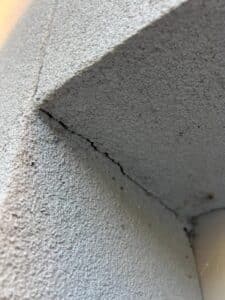The different types of house footings are strip footings, screw piles, pad footings, raft slab footings, and pile foundations. Each one of these footings will provide structures with a stable base thanks to their ability to prevent movement and distribute weight evenly.
For this post, we’ll talk more about the various types of house footings that builders use.
Common Types of House Footings Used Today
The following are the common types of house footings used today:
Strip Footings
Strip footings are a common type of foundation used in residential and light commercial buildings. These footings are essentially long strips of concrete laid under load-bearing walls to distribute the building’s weight evenly across the ground.
The depth and width of strip footings are determined based on the soil type and the load of the structure. They are particularly beneficial in soils that have low bearing capacity.
Properly designed strip footings can help prevent water leaks by ensuring that the foundation remains stable and does not crack under the pressure of the structure or shifting soil.
Screw Piles
Screw piles, also known as helical piles, are deep foundation solutions used for securing new or repairing existing foundations. They are long steel shafts with helical blades which are screwed into the ground.
One of the key advantages of screw piles is their quick installation with minimal disturbance to the site. They are ideal for sites with limited access or where traditional excavation methods are impractical.
Additionally, screw piles are adjustable, making them a viable option for foundation repairs where underpinning might be necessary to correct settlement issues.

Pad Footings
Pad footings, often referred to as isolated footings, are square or rectangular blocks of concrete that support a single point of load, such as a column or a post. These footings are typically used when building loads are carried by a few concentrated points.
This type of footing is simple to construct and economical for lighter structures. The size of each pad footing is determined based on the load it has to carry and the bearing capacity of the soil.
They are especially effective in preventing differential settlement of the structure.
Raft Slab Footings
Raft slab footings, also known as mat foundations, are large, continuous concrete slabs that support the entire weight of a structure. This type of footing is used when the soil has a low load-bearing capacity, requiring the distribution of the building’s weight over a large area.
Raft slabs are particularly useful in areas where soil is not uniform and where other types of footings might lead to uneven settlement. Additionally, raft slabs offer excellent stability in expansive soils and can be designed to integrate with basement constructions.
Pile Foundations
Lastly, pile foundations are deep foundations used for large structures or where the topsoil is weak. They are long, slender columns made of concrete, steel, or wood, driven deep into the ground to reach a more stable layer of soil.
Pile foundations are essential for transferring the load of the structure to the stronger, deeper layers of soil or rock. They are commonly used in large buildings, bridges, and waterfront structures.
This type of footing is crucial in avoiding the risks associated with weak surface soils, such as excessive settlement and soil movement.
